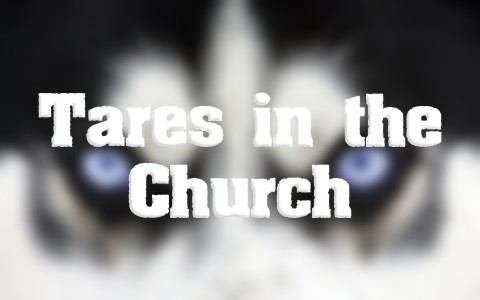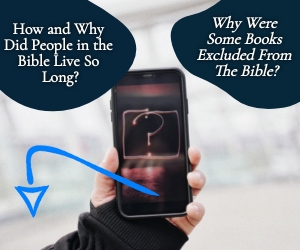Why does God allow for tares to be in the church?
False Converts
The church has long since had false converts in it, and they are certainly in the church today, but the problem is, we can’t always know who they are. We might see some bad fruit and think, “They’re sure not Christian” and be totally wrong, but then see good works from someone who is only doing it to be seen, and think, “Wow, that’s a strong Christian there,” but they could be a false convert. Only God can look into the human heart (1st Sam 16:7), and He alone knows for certain whether that person is saved or not, but there are some fruits that you can see, either fruits of the flesh or fruits of the Spirit that might tell us something. The only problem with that is some people take longer to grow in holiness while others seem to grow more rapidly, however those who seem to be the holiest among us might be the ones who are sinning the most. They might be in the church choir, but be committing adultery during the week. They might look good on the outside, like the religious elite of Jesus’ day, but they could be, as Jesus once said, “Full of dead men’s bones” (Matt 23:27). Jesus did say that we will know them by their fruits, but in this case, He was speaking about false prophets, and said, “Beware of false prophets, who come to you in sheep’s clothing but inwardly are ravenous wolves. You will recognize them by their fruits. Are grapes gathered from thornbushes, or figs from thistles? So, every healthy tree bears good fruit, but the diseased tree bears bad fruit. A healthy tree cannot bear bad fruit, nor can a diseased tree bear good fruit. Every tree that does not bear good fruit is cut down and thrown into the fire. Thus you will recognize them by their fruits” (Matt 7:15-20). So false prophets might even look good, having sheep’s clothing (a Christian camouflage), because even Satan’s ministers can appear as an angel of light (2nd Cor 11:14), but in time, their fruit will be exposed as either being wax or the real thing.
Sheep and the Goats
When Jesus was speaking about the end of the age, a time when He would judge between the wheat and the tares, or the sheep and the goats, He said “When the Son of Man comes in his glory, and all the angels with him, he will sit on his glorious throne. All the nations will be gathered before him, and he will separate the people one from another as a shepherd separates the sheep from the goats. He will put the sheep on his right and the goats on his left” (Matt 25:31-33). The sheep on his right are by His right hand because it deals with authority. Jesus Himself is seated at the right hand of the Father (Acts 2:33). Those on the right are Jesus’ true servants of God, as He tells them, “’I was hungry and you gave me something to eat, I was thirsty and you gave me something to drink, I was a stranger and you invited me in, I needed clothes and you clothed me, I was sick and you looked after me, I was in prison and you came to visit me’” (Matt 25:35-36), and He sees it as doing it unto Him (Matt 25:40), but then “he will say to those on his left, ‘Depart from me, you who are cursed, into the eternal fire prepared for the devil and his angels. For I was hungry and you gave me nothing to eat, I was thirsty and you gave me nothing to drink, I was a stranger and you did not invite me in, I needed clothes and you did not clothe me, I was sick and in prison and you did not look after me” (Matt 25:41-45). By their neglect of the poor, sick, imprisoned, hungry, strangers, and widows (Matt 25:35-36; James 1:27), they prove they are not true sheep. Those who are of the Good Shepherd’s flock, will do those things that the Shepherd has placed before them to do (Matt 25:35-26; Eph 2:10). This explains why Jesus said, you will know them by their fruits (Matt 7:20)…both the wolf in sheep’s clothing and the goats they bring into the church.
Wheat and Tares
In the Parable of the Wheat and Tares, Jesus describes the kingdom of heaven like a sower who sowed seed in his field (Matt 13:24), but while the “men slept, his enemy came and sowed tares among the wheat and went his way. But when the grain had sprouted and produced a crop, then the tares also appeared” (Matt 13:25-26). When the servants saw it, they came to the owner, telling him that they had sown good seed, but he told him it was the enemy. He didn’t try to get the servants to uproot it all. He simply said, “Let both grow together until the harvest, and at the time of harvest I will say to the reapers, ‘First gather together the tares and bind them in bundles to burn them, but gather the wheat into my barn’” (Matt 13:30). When Jesus judges the world He will have the wheat and tares separated, just like the sheep and the goats. The wheat goes into the barn, symbolic of entering the kingdom, but one for the burn pile, signifying the judgement of God (Rev 20:12-15; 21:8). Only then will they be separated, but by then, it will be too late for the lost.
Why the Tares?
I heard one respected theologian say that it is necessary that tares be in the church. Maybe the tares are there so that some of the real wheat might help them to see that they are false converts. If the Bible is being preached, that too will do much to help soften the heart to receive the real gospel of grace (Eph 2:8-9) because the gospel has the power to save (Rom 1:16; 1st Cor 1:18), but without the Word of God and the preaching of the Word of God, the tares may take over the wheat. The sheep that remain may die of starvation. The manna from heaven, or the Bread of Life, Jesus Christ, will either be there or not. If not, the wheat will grow little, if any, however, if a man of God preaches the Word of God with the Spirit of God, there could be birthed, new children of God. When the servants asked the owner why they shouldn’t pull up the tares, Jesus simply said, “No, lest while you gather up the tares you also uproot the wheat with them” (Matt 13:29). This points out that we cannot know with absolute certainty who is and who isn’t saved. That’s best left up to God. He alone knows. If they had yanked out what they thought were tares, they might have uprooted some young wheat instead. I think God knows better than to let us try to settle what might not even be settled yet, or what is already settled in heaven. Why does God allow tares? All I know is everything that comes to pass will glorify God and neither goats nor tares can stop that.
Conclusion
God allows evil for good (Gen 50:20), and He obviously allows tares in the church, but this too is going to work out according to God’s purposes and exactly as His express will dictates. No wolf in sheep’s clothing, no goat among the sheep, or no tares among the wheat will ever stop the church. Not even the gates of hell (or death) can stop Jesus’ church. Since He is the Head of the Church, we need not worry about those who are goats and those who are sheep. Besides, no human action will ever thwart the redemptive plan of God, because what He purposes to bring to pass, must come to pass.
Take a look at this related article: 5 Parable of Jesus
Resource – Scripture quotations are from The Holy Bible, English Standard Version® (ESV®), Crossway Bibles. (2007). ESV: Study Bible : English standard version. Wheaton, Ill: Crossway Bibles. Used by permission. All rights reserved.









 Welcome to What Christians Want To Know! The mission of this site is to equip, encourage, and energize Christians. Look for regular updates including Bible Verses, Bible Stories, Christian Quotes, Christian Answers, and much more. Find out
Welcome to What Christians Want To Know! The mission of this site is to equip, encourage, and energize Christians. Look for regular updates including Bible Verses, Bible Stories, Christian Quotes, Christian Answers, and much more. Find out 









